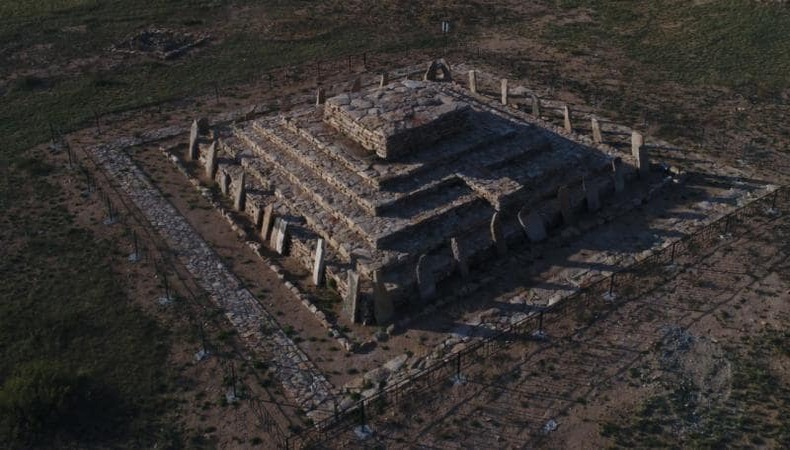Scythian-Saka Era Pyramid Discovered in Kazakhstan

A 3,400-year-old pyramid dating back to the Scythian-Saka era was discovered during four excavations at the Karajartas Mausolem in Kazakhstan. It was found near the Taldy-Nura River. The pyramid’s origins is said to be between the 14th and 12th centuries B.C, between the timeline of the Begazy-Dandybai culture.
Archaeologists also discovered artistic works in the pyramidal monumental tombs. These works are attributed to medieval Turkic tribes. It carries significant common characteristics of steppe culture and the marks of traditional Turkic religious beliefs.
Dr Aibar Kassenali, from the National Museum of the Republic of Kazakhstan, believes the steppe pyramid was built for a local ruler who ruled over the Kazakh steppes during the Andronovo period.
Pyramid Bengazi-Dandibay Period
He said the pyramid structure, as per carbon-14 analyzes, is dated to between the 12th and 14th centuries BC. “The existence of multiple pyramid step-like monument tombs identified in the region indicates that the Taldi River Valley, located within the Sari Arka steppes, was used as a Valley of Kings for the Andronovo communities during the Bronze Age, similar to the Nile Valley in Egypt, where their great leaders were buried.”
Kassenali says construction of the colossal structure in the Bronze Age and in a highly arid region like the steppe is indicative of the high artistic sensibility and rich spiritual beliefs achieved by the Begazi-Dandibay communities.
He explained that the rulers of the Begazi period constructed the Karajartas Pyramid, engaged in metal exports to a vast area stretching from Turkmenistan’s Namazga-depe in the south to Tagisken in Harezm in the west, and as far as the Altai Mountains in the east.
Keep Reading
Border Countries With Israel at Risk of Economic Chaos
Erdogan Gives NATO Green Light for Sweden
This Pyramid Was a Cultural and Religious Hub
Experts believe the pyramid functioned as a mausoleum and as a sacred space for religious ceremonies. Dr Serhan Cinar said the stepped pyramidal monument tombs identified in Karajartas could be early versions of burial structures from the Scythian era mentioned in historical records.
He highlighted that the steppe pyramid, namely the Karajartas Mausoleum belonged to a local ruler from the Begazi-Dandibay period. Special sacrificial altars were found next to the settlements where rituals were held. They also found ritual sculptures carved from small stones in the shape of the human body, resembling depictions of gods worshipped during annual festivals, similar to Mesopotamian inhabitants.




